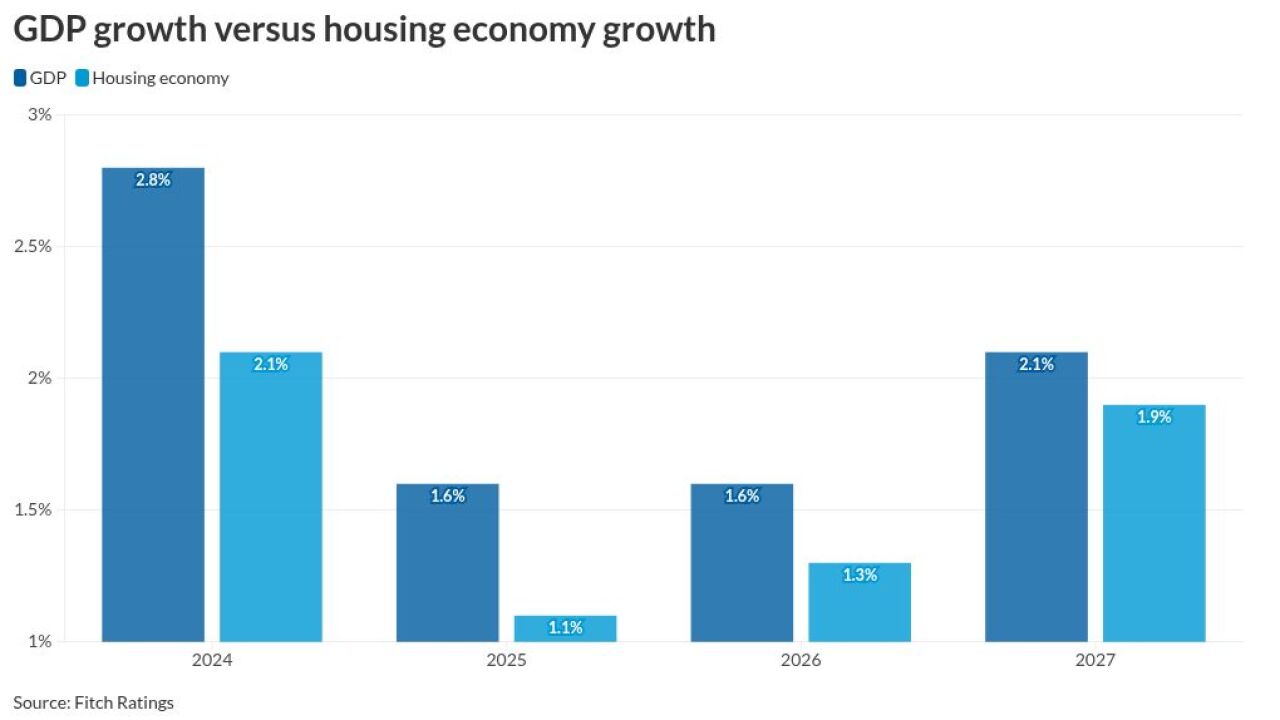Collateralized loan obligation (CLOs) issuance fell amid inflation and geopolitical uncertainty in Q1 2022, as market participants confronted moving to a new floating-rate benchmark to price assets and liabilities, according to a recent snapshot of the industry from S&P Global Ratings.
Overall, the structured finance market saw production hit $185 billion, a 16% increase from 2021’s $160 billion during the same period. Issuance in March totaled $66 billion, matching February’s total, S&P said.
Among four categories of structured finance tracked by S&P, CLOs were the only one to see a drop in volume in the first quarter, falling to $31 billion from $40 billion, according to the rating agency. James Manzi, senior director at S&P Global Ratings, said the drop was unsurprising given last year’s record issuance of $187 billion, far exceeding the next highest annual volume of $129 billion in 2018, and recent market volatility has spooked issuers and investors.

“Since the start of the conflict in Ukraine that has roiled markets, we’re seeing a wide variation on where CLOs are pricing,” Manzi said.
He added that AAA tranches have priced with spreads ranging from 140 bps and 160 bps, and that spreads have generally widened, reducing the incentive to refinance or reset deals.
“There’s generally not been the transparency that issuers want for where these deals are going to price,” Manzi said, adding, “First quarter last year saw $71 billion in refis and resets, and this year it was $21 billion,” Manzi said.
In addition, he said, the standard two-year, non-call and five-year reinvestment periods now vary significantly and are often shorter.
Another factor putting downward pressure on issuance has been the requirement to price CLO assets and liabilities over the secured overnight funding rate (SOFR) rather than Libor. Unlike the term rates available with Libor, SOFR is an overnight rate that can be calculated in several ways to approximate terms and has yet to develop sufficient derivative liquidity to support the term structures favored by commercial borrowers.
Nevertheless, S&P originally forecasted a volume of $160 billion for 2022, down from last year but still far above issuance if previous years. On March 29, the rating agency lowered its U.S. GDP growth forecast to 3.2% from 3.9%, a slowdown that could weigh further on CLO issuance.
“We now think volume will come down from $160 billion, but we have to be thoughtful,” Manzi said, noting that should conditions turn more favorable as the year progresses, the outlook could improve. “On a broad level, the CLO market has been making fools of forecasters over the last couple of years. Every time we said it would go higher, it went higher still.”
Other categories of structured finance fared better in Q1. Commercial mortgage-backed securities (CMBS) volume totaled $29 billion compared to $15 billion the year before, and S&P anticipates 2022 volume tying last year’s at $110 billion. That’s a record high, despite concerns about the pandemic’s negative impact on office buildings and certain properties in the hospitality sector.
Manzi said single-borrower deals drove issuance in Q1, making up about two-thirds of deals, as they have over the last few years. CMBS backed by industrial properties, however, picked up in Q1, particularly for deals securitizing revenues from warehouses. Manzi noted that delinquencies for assets in CMBS conduits averaged 3% overall, while the rates for hotels and retail assets, and industrials were between 6% and 7%, and 0.3%, respectively.
Asset-backed securities (ABS) volume in Q1 2022 was $71 billion compared to $70 billion last year, which saw a record $297 billion issued for the entire year, a number S&P Global’s 2022 forecast puts at $316 billion.
Residential mortgage-backed securities (RMBS) volume in Q1 2022 was $54 billion compared to $35 billion during the same period last year, and volume for full-year 2021 was $188 billion. S&P Global anticipates RMBS volume increasing somewhat this year, to $200 billion.






